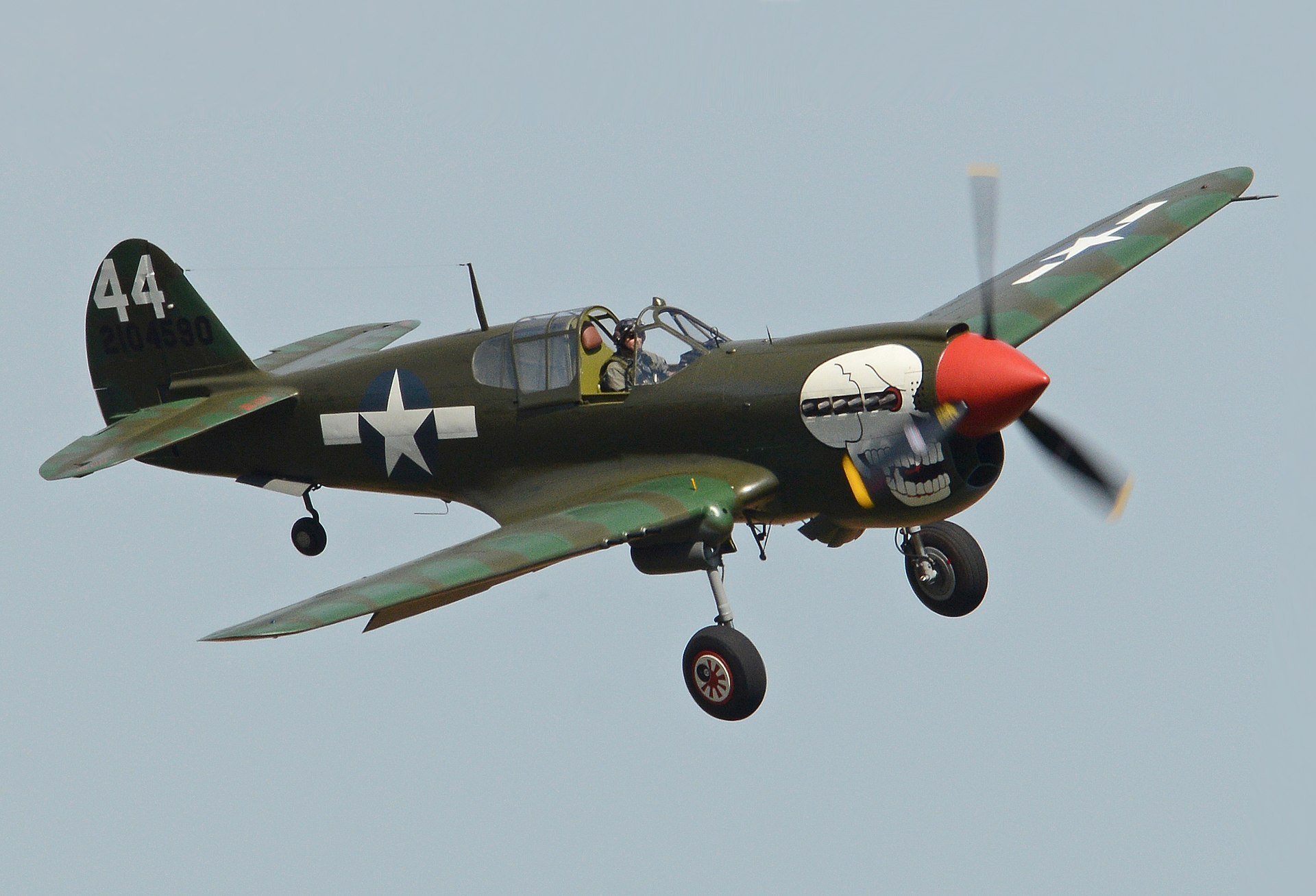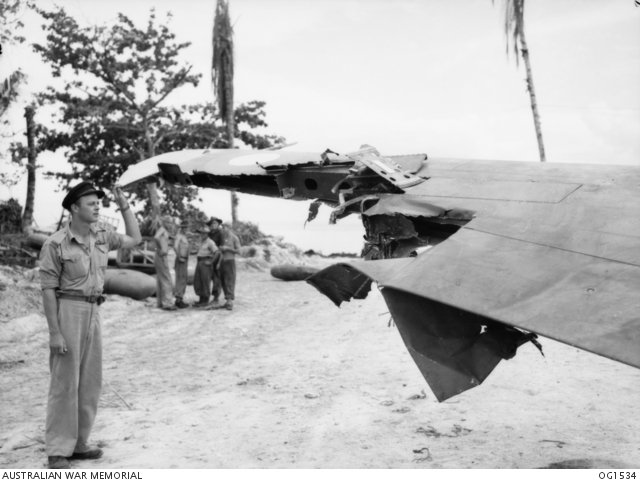Blog #9: 1/23/23: Historical Aviation Blog - the Curtis P-40 Warhawk: Unsung Hero of the Skies
Good evening! Tonight’s historical aviation news delves into the life and legacy of the Curtiss P-40 Warhawk, one of the most storied fight planes of World War II;
Welcome back to another episodic blog of Brooke In The Air!
The last surviving airworthy example of the P-40B Warhawk, and the sole surviving airworthy aircraft from the attack on Pearl Harbor
Source: (By Tony Hisgett - Flickr: Curtiss P-40B 41-13297 4, CC BY 2.0, https://commons.wikimedia.org/w/index.php?curid=17235690)
Today’s (01/23/2023) blog features a story in historical aviation! The legendary P-40 Warhawk, also known as the Tomahawk or Kittyhawk.
Curtiss P-40M Warhawk of the Royal Canadian Air Force (RCAF)
Source: Operated by Peter Teichman's Hangar 11 Collection, based at North Weald, Essex. She currently wears the markings of a P-40N '44-2104590' named "Lulu Belle", which was flown by 2nd Lieutenant Philip R. Adair as part of the 89th Fighter Squadron, 80th Fighter Group, 10th Air Force, USAAF - based in the China-Burma-India Theater. Seen on finals to land after displaying at the Shuttleworth 2016 Season Premier Airshow. Old Warden, Bedfordshire, UK. Date: 08-5-2016
(Photo by Alan Wilson from Stilton, Peterborough, Cambs, UK - Curtiss P-40M Warhawk '2104590 / 44' (G-KITT), CC BY-SA 2.0, https://commons.wikimedia.org/w/index.php?curid=48776394)
The P-40 (“P” standing for “Pursuit”) was a single-engine, single-seat air combat fighter designed by the Curtiss-Wright Aircraft Corporation, now simply the Curtiss-Wright Corporation - a company still in existence and based in Davidson, North Carolina, all 13,700+ examples were built at Curtiss-Wright’s production facility in Buffalo, New York, the 3rd most commonly mass produced fighter of the war. The fighter was known as the Warhawk across all United States Army Air Corps’ theatres. However, the British Commonwealth, Soviet Air Forces, and other allied users, named the plane the Tomahawk for the early P-40A and P-40B models, and Kittyhawk for the later models such the P-40D, P-40E (both in mass common usage in 1943-1945) and all subsequent variants.
The P-40’s biggest initial drawback was that the engine lacked a supercharger making it increasingly vulnerable to Axis counterparts such as the Messerschmitt BF-109, Focke-Wulf Fw-190 in the European theatre, and the Mitsubishi AGM Zero in the Pacific theatre. All three of these fighters outclassed the P-40 to the end, forcing the plane into reserve squadrons in lieu of better, more capable planes.
Most of the aircraft in the Pacific theatre were P-40Bs and many (90%+) were destroyed, suffering atrocious losses, both in the air and on the ground, to the Imperial Japanese Navy’s much more agile, nimble, and speedy A6M Zero (and later, the Nakajima Ki-43 Hayabusa), which was reaching it’s height of popularity and success. For example, at Pearl Harbor, 95% of the P-40Bs were destroyed though a small number, notably, Major (then Lieutenant) George Welch, and Brigadier General (then-second Lieutenant) Kenneth Taylor, both of whom earned Flying Ace status from December 7, 1941 onwards and for their actions on December 7, both were awarded the Distinguished Flying Cross and other air medals. Taylor especially was nominated for the Congressional Medal of Honor. Taylor’s P-40B is currently the only Warhawk remaining airworthy and the sole surviving example of the P-40 from the attack on Pearl Harbor.
The early “Tomahawk” first saw combat with the British Commonwealth’s Royal Air Force (RAF), Royal Australian Air Force (RAAF), and Royal Canadian Air force (RCAF). While the P-40 was later replaced in the war by the British Supermarine Spitfire, and especially the American twin-engine Lockheed P-38 Lightning, Republic P-47 Thunderbolt, the US Navy’s F6F Hellcat and the unanimous favorite aircraft of the US Marine Corps, the Vought F4U Corsair. Undoubtedly, the P-40, P-38, and F4F Wildcat accounted for 48% of all enemy air kills during the war. Early on, it could excel at low and medium altitudes but was outclassed eventually by the aforementioned enemy fighters. The P-40 was used extensively in the North Africa campaign and faced the brunt of the attacks by the Third Reich’s Luftwaffe and Italy’s Regia Aeronautica; while considered inferior to the Spitfire, the P-40 was vastly superior to the Hawker Hurricane, and eventually the so-called Desert Air Force in North Africa was equipped with almost nothing but the P-40. The effectiveness of the P-40 led to the Luftwaffe’s accelerated retiring of the Bf-109E and mass introduction of its successor, the Messerschmitt Bf-109F, a 109 with further enhanced performance. Most of the pilots of the Bf-109F were elite pilots of the Jagdgeschwader 27, or Luftwaffe Fighter Wing (JG) 27, nicknamed “Afrika.” Nevertheless, until late in 1941, most enemy aircraft could not match the P-40.
The most famous group of P-40 Warhawk pilots were the 1st AVG, or 1st American Volunteer Group, otherwise known as the Flying Tigers, which flew under the auspices of the Chinese Air Force of Chiang Kai-shek. The Flying Tigers really require their own blog post, but essentially they were an all-volunteer group (wing) of American airmen, 100 in all, 40 from the US Army Air Corps, and 60 from the US Navy, and US Marine Corps, flying for the Republic of China initially in Burma, against the Japanese invaders from 1941 until 1942. The pilots received parts of P-40s in crates shipped to them from the mainland, assembled them by hand, adding in self-sealing fuel tanks and extra .50-in. guns, essentially creating a hybrid between the P-40B and P-40C variants, showcasing true ingenuity and effectively creating a new original type of aircraft.
“Hell’s Angels” 3rd Squadron of the Flying Tigers, 1st AVG. Flying over China
Source: (By R. T. Smith, copy at SDASM Archives - R.T. Smith Autographed AVGUploaded by PDTillman, Public Domain, https://commons.wikimedia.org/w/index.php?curid=15405113)
The armament of the P-40 rarely changed much, even with the exception of the so-called “Kittybomber” which was a P-40D flown by the RAF and RAAF that mounted dual racks of 3 250-lb. bombs (6 total) for use over North Africa against the Luftwaffe. There were nearly 20 variants produced of the P-40, with the P-40B being the most commonly used in the US Army Air Forces until the P-40 was phased out and retired completely. The successor variant, the P-40C or Tomahawk IIB (as it was known in the Soviet Union and the British Commonwealth) added underbelly drop tank and bomb shackles, self-sealing fuel tanks and other minor revisions, but the extra weight did have a negative impact on aircraft performance. Typically, the P-40 was armed with 2 .30 or .50 calibre machine guns, though this armament would be vastly expanded upon in the future through later variants. The P-40E, for example, mounted 6 12.7-mm (.5-in) M2 Browning machine guns, with 3 in each wing (three on the port wing, three on the starboard). The common thought of the Allied High Command at the time was, “more guns = more wins = better pilots = war is over quicker” and to an extent, they were correct.
The P-40 was surprisingly resilient and durable, in that while it was easy enough to shoot down for an enemy on par with the P-40, the aircraft would at least keep its pilot alive and when it crashed or crash-landed, would usually do so mostly intact. See picture below.
A damaged P-40D Kittyhawk of Number 75 Squadron of the Royal Australian Air Force (RAAF) flew more than 200 miles with this damaged aileron after a midair collision with another P-40D (which also survived). The pilot is seen examining his plane.
Source: (By Harrison, John Thomas. Public Domain, https://commons.wikimedia.org/w/index.php?curid=1781436
Mitsubishi A6M Zero (Reisen) Model 22 - Replica by the Commemorative Air Force, base: T-6 Texan. Very few working examples of the A6M exist to this day, with the only known put-together model being at the Japanese Imperial Military Museum outside Tokyo. The A6M was the mortal enemy of numerous American aircraft during the war, the P-40 was the first.
Source: (By Kogo - Own work, GFDL, https://commons.wikimedia.org/w/index.php?curid=3936615)
Experimental XP-40 in flight during aerial testing, c. 1939 by the USAAC Materials Division.
Source: (By U.S. Army Air Corps - http://www.ww2incolor.com/gallery/U-S-Air-Force/xp_40, Public Domain, https://commons.wikimedia.org/w/index.php?curid=1613741)
Conclusion: Of the more than 13,700 examples of the P-40 created, no more than 28 exist around the world today. Many are in static displays with the remainder under reconstruction for flight demonstration / air show purposes. The P-40 was truly the Warhawk of its time, and a workhorse. Other fighters were faster, better armored, better armed, had more powerful coolers or engines, but none could match the overall durability, ruggedness, or American ingenuity of the Curtiss P-40 Warhawk, used by Allied nations around the world in World War II.
Until next time, this is Brooke from Brooke In the Air, and I’ll see you in the air! Remember to visit my YouTube channel for travel videos, and like, comment, subscribe!







